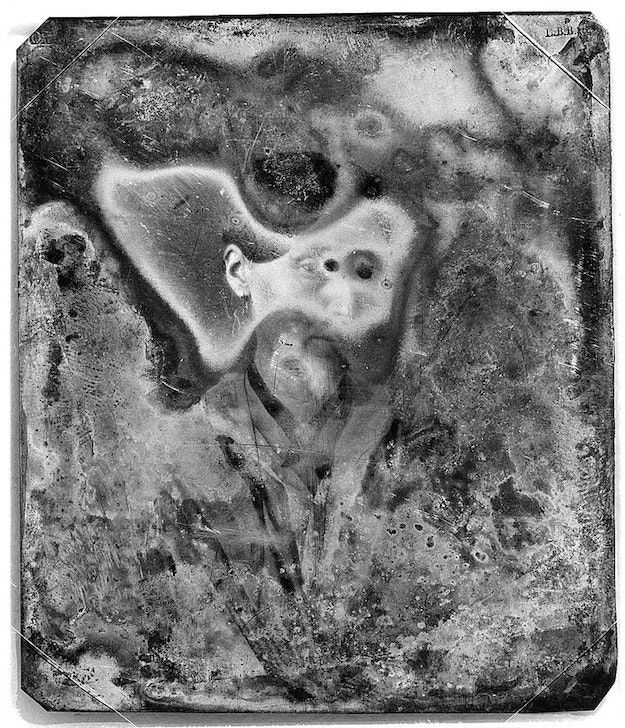Taking Slides
November 30, 2020 Daguerrotype Photography Michelle Nijhuis
 A faded Daguerrotype
A faded Daguerrotype
As a continuation of my earlier post about photographic techniques, let me blatantly take sides in a historical battle and express my love for the Daguerrotype: This intricate process that fixes silver crystals to a plate not only results in beautiful images, but in an incredible degree of detail.
From an older article by Michelle Nijhuis on The New Yorker:
Daguerreotypes are still cherished for their eerie clarity—each plate in an 1848 series of photographs of the Cincinnati waterfront, for example, is equivalent to a hundred-forty-thousand-megapixel photo. They are so detailed that a viewer can distinguish the time on a clock tower, German names on storefronts, and underwear hanging from apartment clotheslines.
Why, then, are Daguerrotype not more widely seen or used? In part because photographic paper turned out to be more practical. And in part because the images were too fragile:
While some daguerreotypes do survive today in excellent condition—even some of the earliest examples, such as a photograph that Daguerre presented to the Austrian chancellor in 1839, are in good shape—other images now seem to be slowly fogging and darkening, even when protected from tarnish under a layer of glass.
This quote really gets to me:
“If you put your daguerreotypes in an inert atmosphere, in the dark, at zero degrees centigrade, maybe they’ll last for a thousand years,” said Grant Romer, a former Eastman conservator and a daguerreotype specialist. “But what’s the use of having them if you can’t see them?”
So while many of the Daguerrotypes that still exist may be the only surviving documents of a very specific period of time, their fragility means that exposure to light and environmental factors—in short, time—means they will slowly disappear.
The silver lining, if you will, is that even disappearing memories become entirely new artifacts—as illustrated by these examples of faded Daguerrotypes collected by The Public Domain Review.